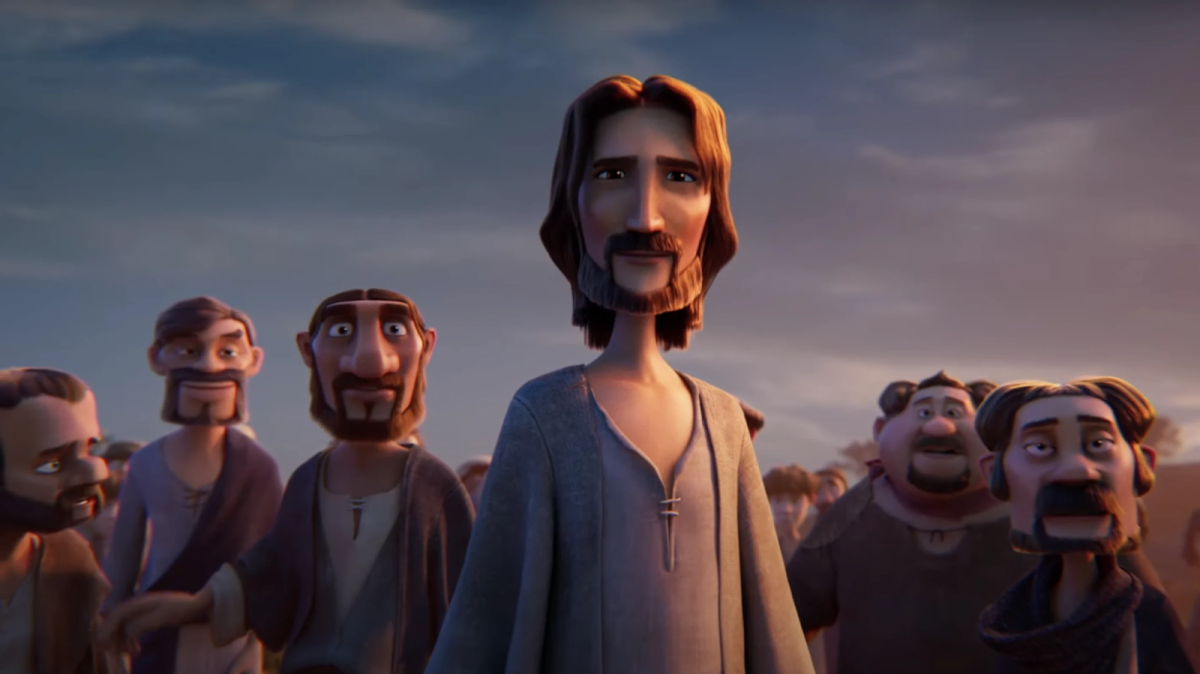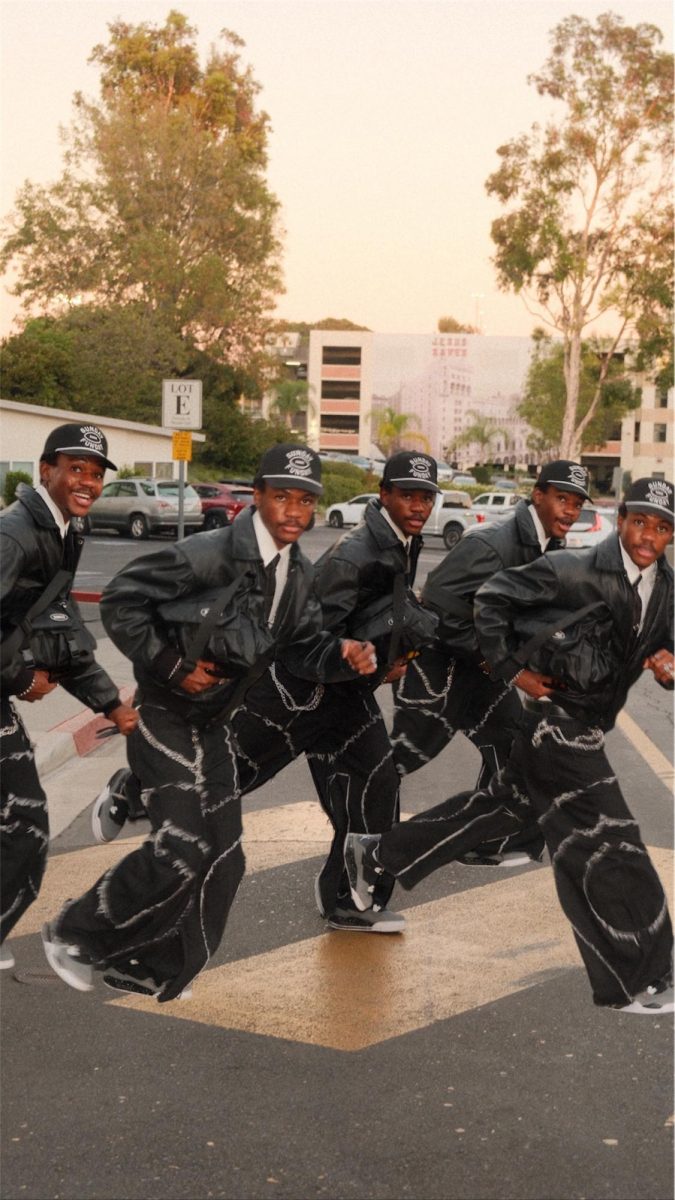When one thinks of Christian films the mind usually goes to “Jesus Revolution,” “The Chosen” or Angel Studios. While it is relieving to finally see more artistically merited live-action works, the realm of Christian animation has remained mostly silent. The art form experienced its heyday in the late 90s with VeggieTales and has recently resurfaced with “The Wingfeather Saga.” Most of Christian animation is found through television series with the only theatrical works being “Jonah: A VeggieTales Movie” and “The Star.”* However, Angels Studios’ “The King of Kings” has defied the craft while setting its future potential. When I first saw the trailer, I was caught off guard and confused by its unique style as well as the stacked voice cast. After learning about its fascinating production and witnessing its artistry on the big screen, going to tell it on the mountains won’t be enough.
“The King of Kings” is not Angel Studios first foray into animation but it is their first theatrically released animated production. It is a loose adaptation of Charles Dickens’ “The Life of Our Lord” which is a children’s version of Jesus’ life. The film starts out with the near end of a completely different story, “A Christmas Carol,” as Scrooge is about to wake up. Scrooge’s monologue is interrupted by the screams of a cat and child revealing it was being performed by Dickens himself. Walter, Dickens’ youngest son at the time, humiliates his father in front of the fans causing Dickens to blow his fuse. At the encouragement of his wife Catherine, Dickens retells the life of Jesus to the fantasy obsessed Walter, putting them inside the ancient biblical world.
HEAVENLY VOICES
The stage fluent Kenneth Branagh and Ben Kingsley play Charles Dickens and High Priest Caiaphas respectively. Branagh himself grew up protestant while Kingsley narrated the 2007 animated Exodus adaptation “The Ten Commandments.” More celebrities fill the credits with Uma Thurman as Catherine Dickens, Pierce Brosnan as Pontius Pilate, Forest Whitaker as Peter and Oscar Isaac as Jesus Christ. While both grew up with mixed relations to the faith, Brosnan described Jesus as “our Lord, our savior” while Isaac pointed to his heart proclaiming “the kingdom of Heaven is here already.” The film also utilizes the talents of legendary voice actors Mark Hamill, Jim Cummings and James Arnold Taylor with the last two being outspoken believers.
The explanation for the film’s celebrity cast can most likely be attributed to casting director Jamie Thomason. While an often unattributed position, the casting director is very important to making a film both memorable and successful, especially in animation. Thomason has worked predominantly in the world of animation casting voices from Disney’s “A Goofy Movie” to Studio Ghibli‘s “Spirited Away.” “The King of Kings” also has Thomason branching out of his usual profession, being one of its producers while also writing additional dialogue for the script. In terms of the screenplay, notable screenwriter Rob Edwards of “The Princess and the Frog” fame also contributes additional dialogue to the film.
“The King of Kings” crew is more unorthodox than most animated features but it’s not uncommon for animated series or movies to be outsourced in other countries and the majority of this film’s team is entirely based in South Korea. “The King of Kings” is director Seong-ho Jang’s first feature as a director though he is no stranger to the big screen. Jang is one of the leading VFX filmmakers in South Korea working with some of the most highly acclaimed directors in his country. Jang himself is a professing Christian and hopes the film can reach believing and secular audiences in his homeland as well as worldwide. Jang has already become an auteur through his first piece, fulfilling not only the role of director but also lead writer, producer and editor.
RESURRECTED GENRE
Jang, along with cinematographer Woo-hyung Kim, created “The King of Kings” through an advanced method of motion capture. The two filmed the actors’ movements first in Unreal Engine to help speed workflow. After recording each actors’ movements, Kim would go into the virtual space and simulate numerous different angles in this pioneering environment. The dialogue would then be recorded and the scenes would be animated with the animators using the motion capture blocking as reference. The system was done by MOFAC, Jang’s critically acclaimed VFX production company known for growing South Korea’s cinema. This allows problems to be fixed in real time, improving the tedious production pipeline animated films are used to.
The writing team did an exceptional job combining two already existing works of literature while giving the story a sense of originality. A point most critics made when reviewing “The King of Kings” was its lack of necessity in today’s culture. However, the life-saving story of Jesus Christ is what all moviegoers need in a time of unwanted sequels and nihilistic narratives. What most critics do not seem to point out is the imaginative way “The King of Kings” separates itself from other biblical and Jesus related adaptations. Charles Dickens really did embark on reading tours like the one with which the film opens. “The King of Kings” acts as a homage to this historical fact using it to give less associated audiences a familiar figure to lead them through the life of the most important person.
Dickens and his family are present throughout most of the stories’ events with the only character who can see them being Jesus himself. This could signify how the presence of Jesus can be found through numerous tales and art, meeting the observer in different parts of the work. Unlike other animated biblical adaptations, “The King of Kings” remains almost completely accurate. The film’s artists, filmmaking and storytelling makes it stand apart from both its fellow Christian and secular counterparts. “The King of Kings” is making a comeback for feature length Christian animation during a pivotal time in entertainment history.






